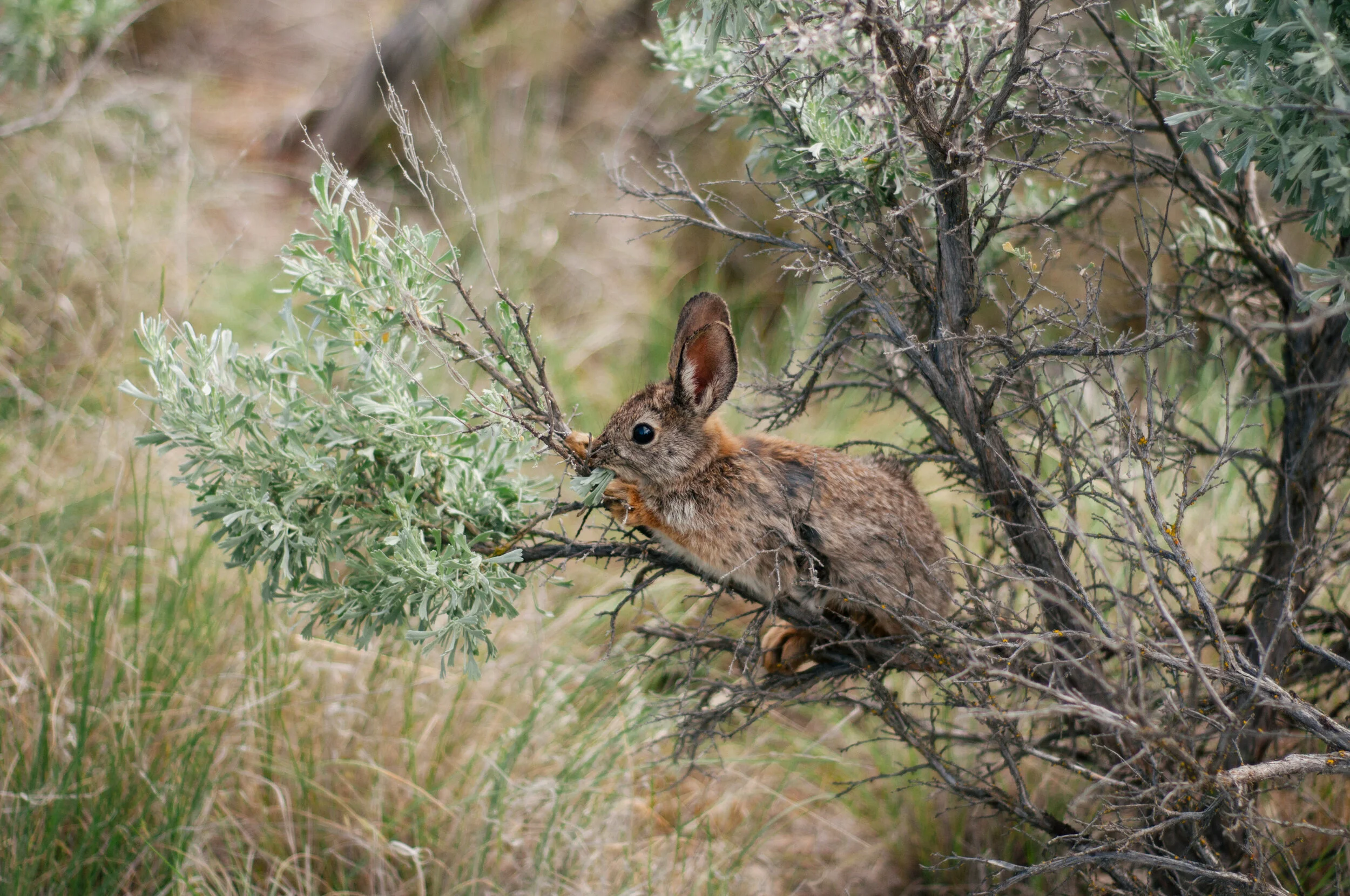By Lane Justus, Education and Outreach Coordinator with TNC (AmeriCorps)
Our Moses Coulee-Beezley Hills Preserve is one of the Conservancy’s largest landholdings in Washington and we’ve been working over the last several years to share information and increase engagement with the local community in Central Washington.
Our commitment to community engagement was strengthened when I met a neighboring landowner to the preserve who told me that, at a recent Quincy Chamber of Commerce Event, many people identified the Beezley Hills Preserve as an area they valued, but were interested in knowing more about visitor access and trails in the region.
Volunteer hunter-stewards pick up trash alongside a road in the Beezley Hills Preserve. © Nick Altadonna/TNC
The truth is that recreational opportunities on the preserve are limited and not as well publicized as they could be. This is due in part to the fact that we face ongoing challenges with trash dumping and vandalism along the back roads of the preserve.
We’ve had a strong connection with the hunting community through our Hunter Stewardship Volunteer program, but volunteer opportunities are on hold right now because of the COVID-19 pandemic. We miss these volunteers terribly and look forward to being able to work with them again.
Existing two-track trails or dozer llnes could offer easily-maintained hiking access to the Moses Coulee-Beezley Hills Preserve. © TNC
The encounter with our neighbor, however, sparked our Stewardship team to begin to brainstorm ways to resolve some of these issues, and explore options for improving visitor use at Beezley Hills.
I began walking dozer lines, deer trails, and ATV tracks on Beezley Hills Preserve, searching for good views, and hoping to find them within these, already available, trails (obviously, this is an ideal day "in the office" for me). By using these previously established paths, our goal is to avoid causing further disturbance in the habitat from physically creating new trails. Also, maintaining these trails would be very manageable with our current resources.
As we explored these options, it became apparent that there were other considerations in this, already intensive, balancing act. It seems like it should be a pretty simple process to set up a trail in shrub-steppe country, but we had multiple issues to consider.
We must be mindful of how the various routes may impact wildlife habitat and protected species, sensitive plant communities, and cultural resources. There are also concerns with locating appropriate space for parking, issues with invasive plants and minimizing potential safety hazards in the area.
Preserve signs are targets for vandalism. ©TNC
In addition to finding appropriate paths, we must also think about how to best mark our trails. The markers should clearly indicate the trail, prevent people from using our signs for target practice, and discourage individuals from dumping garbage in this area.
In considering this, we were presented with yet another challenge—shallow, rocky soils that would make it difficult to install signposts, which are the most common form of trail markers that we use on these preserves. A simple option to overcome this challenge would be to use rock cairns as trail markers, however, we are apprehensive about using these because of their associations with cultural resource sites (for more information about rock cairns, follow this link: https://www.livescience.com/65687-rock-cairns.html). So, as of now, we are exploring options for using signs attached to large rocks.
Eventually, when we are able to finish trail development and advertise these areas for hiking or running, we hope that visitor use will improve and that, in turn, will help to combat some of the other problems that the land currently faces. We also are striving to consider equity in our advertising methods and improve our efforts in reaching diverse audiences.
Until then, we are continuing our engagement with the surrounding communities and are looking forward to meeting them where they are at in their environmental appreciation and conservation journey.
Banner photo © Hannah Letinich


























